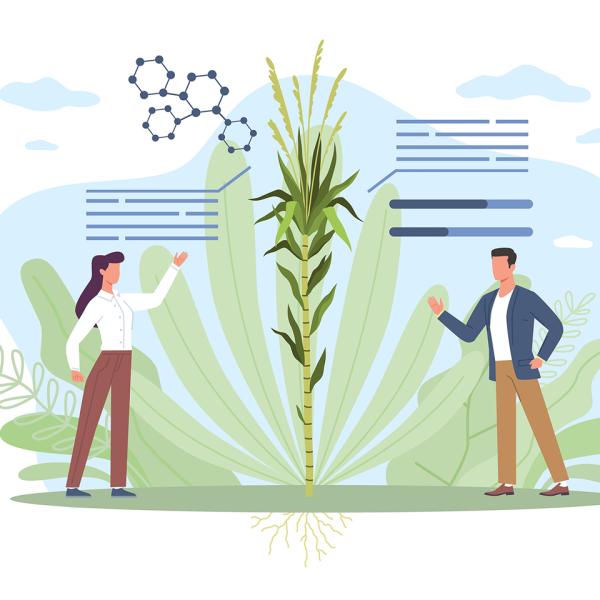Following the flow of micronutrients
In another collaboration, Gao and a University of Manitoba plant science colleague, Martin Entz, are comparing how organic farming and different crop rotation practices affect micronutrient levels in wheat grains.
Gao’s team is also designing different experiments to better understand how micronutrients move through the soil to the roots of the plant. That includes adding a zinc isotope to the soil and tracking how it gets taken up by the roots.
They’re examining how micronutrient fertilizers could boost the nutritional quality of crops, a question that’s often overlooked because micronutrient deficiencies are less common than macronutrient deficiencies. And they’re studying how too much phytate — a form of phosphorus — can bind with iron and zinc, making them less easily absorbed when people eat the harvested grain.
“We are trying to establish the linkage between the soil to [the] human,” Gao says. “That’s the most novel and also the most exciting part of this work.”

[CFI funding] allows us to do some pioneering research, not only in Canada, but really across the world. Very few groups are looking at these topics.”
— Xiaopeng Gao, University of Manitoba
Unpacking the impacts of climate change
To figure out how climate change impacts all those processes, Gao is conducting studies in a CFI-funded growth chamber that can control not only temperature and moisture levels but also CO2 concentrations. “With this very precise control, we can actually simulate climate change,” he says.
He and his team are raising crops under controlled conditions inside the growth chamber. One experiment aims to dial up CO2 and reduce moisture levels to mimic drought. Another might look at what happens when there’s too much water, to simulate flooding.
The researchers then take plant samples at different stages of growth, digest them with chemical acids under high heat and analyze them to see how micronutrients get distributed through the plant under various climate scenarios.
Keeping Canadian agriculture on the cutting edge
Mohr believes agronomy efforts like these are crucial for Canada, especially as new crops and varieties enter the market, agricultural processes evolve, and growing conditions shift due to climate change.
“It’s essential to really have that strong research basis for the practices that we’re employing in the field in order to ensure that not only are we producing a high-quality crop and a productive crop, but that producers are able to do that in a cost-effective manner to ensure their economic viability and also protect the environment at the same time,” she says.
It’s important to have people like Xiaopeng do the work that he does … Our crop production systems are always evolving, and we want to make sure that our nutrient management practices keep pace with that.”
— Ramona Mohr, Brandon Research and Development Centre, Agriculture and Agri-Food Canada
The research project featured in this story also benefits from funding from the Natural Sciences and Engineering Research Council of Canada.






